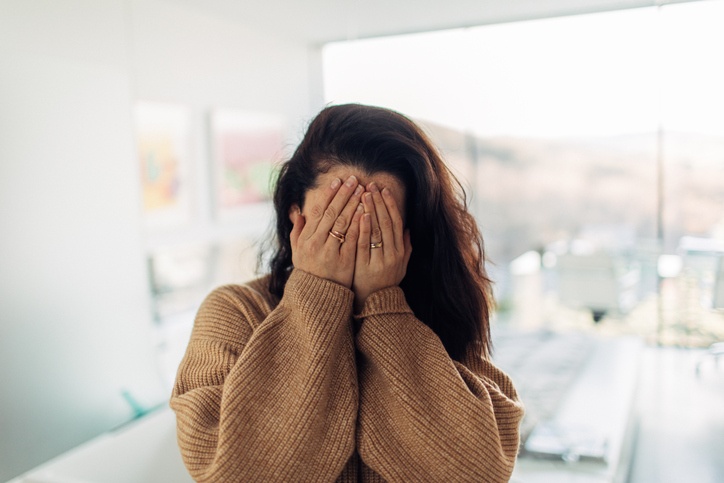In partnership with SA’s top medical aesthetic companies
Our harsh African sun is responsible for many of our skin woes, including many of the pigmentation issues that affect SA women of all skin tones.
Hyperpigmentation – blotches of excess pigmentation that aren’t part of your normal skin colour – is the No. 1 skin condition condition that affects many South African women of all ages and skin tones. Don’t let the popular expression “black don’t crack” fool you into thinking that darker skin is somehow immune. From the darkest and hardiest skin to fairest complexions – skin discoloration can affect us all.
Sorry for us, it’s one of the trickiest skin problems to treat and manage because there are different types and causes of hyperpigmentation, and before you can tackle the problem, you need to know exactly which kind you’re dealing with.
The good news is that once the type of pigmentation at play has been identified, the aesthetic doctor will understand how to treat, manage and maintain your skin to ensure that it doesn’t reoccur once you have it under control.
A short biology lesson
Melanocyte cells in our skin make the melanin pigment that gives us our skin colour and natural sun protection (the darker the complexion, the higher the protection). But when these become damaged or unhealthy, our melanin production is affected – this most commonly affects only patches of our skin, but other types of pigmentation disorders affect our entire body.
The different types of pigmentation
Post Inflammatory Hyperpigmentation (PIH): occurs after the skin has undergone some kind of injury or inflammation. For example, if you suffered from acne in the past, or you have had a skin injury, you’re often left with brown spots where the lesions used to be, especially if you have a darker complexion. Medical processes that require the use of laser may also lead to PIH. Certain drugs and medications may also cause dark spots.
Skin-care ingredients such as benzoyl peroxide, arbutin and salicylic acid and anti-aging compounds such as retinoids (on prescription only) and glycolic acid may also cause skin irritation and inflammation. In some patients, the skin-bleaching compound hydroquinone can also irritate skin. However, these treatments have the ability to be very effective when administered by a doctor.
Pigmentation due to sun damage: is caused by unprotected sun exposure, which damages and triggers inflammation in our skin, leading to ‘age spots’. Living where we do, it’s often caused by repeated sun exposure, but even one case of severe sunburn can contribute to the condition. As we get older (forty plus), we start seeing the sun damage from our youth rising to the surface of our face and arms in the form of permanent dark marks.
Melasma: This hormonal pigmentation occurs mostly in women, manifesting on the face as brown patches that appear on the nose bridge, cheeks, forehead and the upper lip. This condition visibly worsens when the skin is exposed to the sun and tends to become severe in summer. Melasma is one of the most difficult types of pigmentation to treat due to the multiple internal and external triggers that cause it. These can range from unbalanced hormones to leaky gut syndrome and uncontrolled inflammation in the body, or even be a combination of several conditions.
Chloasma: is a more temporary kind of melasma, occuring during pregnancy, where some areas of the skin tend to darken, such as the ‘pregnancy mask’ on the face. It also causes darkening on the abdomen. As with melasma, exposure to sunshine makes it worse.
The opposite of hyperpigmentation
Hypopigmentation
Hypopigmentation is kind of like the opposite of pigmentation. It’s when an area, or multiple area, of the skin starts to lose pigment, and you’re left with white patches or spots.
Again, it’s difficult to treat as it can have multiple causes, including injury, severe sun damage, scarring and certain diseases. In some cases, especially when related to diseases that completely destroy the melanocytes (your skin’s cells that produce the pigment that give it it’s colour), hypopigmentation is irreversible.
Need to know
- Read on in our weekly series to find out which treatment regime will work for you, depending on your diagnosis.
- When you are treating pigmentation, it is absolutely essential to wear an SPF50+ sunscreen every single day, as just one bout of unprotected sun exposure will set your treatment back.
For more information on pigmentation as well as hypopigmentation and the treatment thereof, visit Skin Renewal on www.skinrenewal.co.za or contact 0861 SKIN SA (754 672).
Take the quick Beyond Beauty Survey and you could win a R2 000 Skin Renewal voucher to spend in our online store, with free delivery within South Africa. T&Cs apply.
